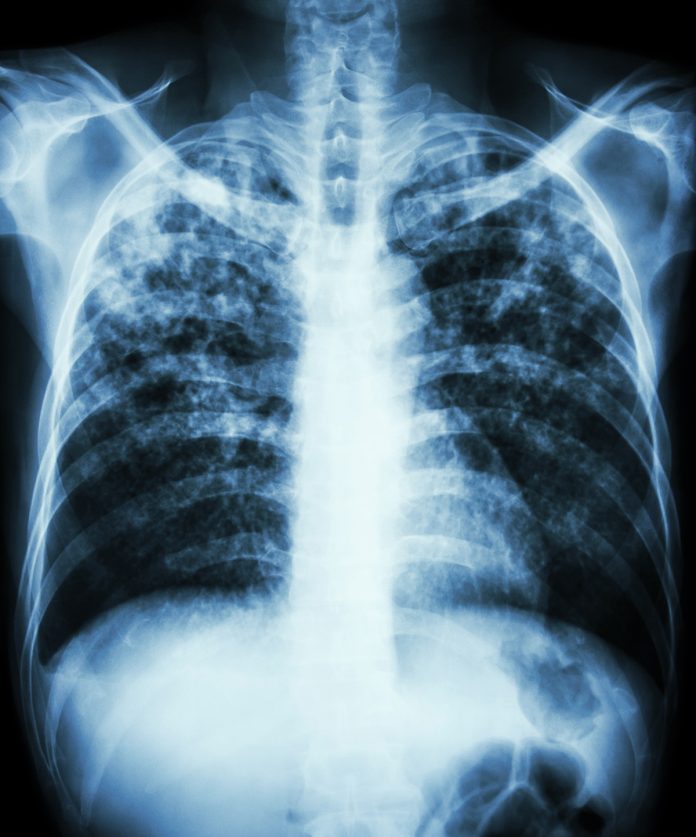Helen McShane, Professor of Vaccinology at The Jenner Institute, University of Oxford reveals the current status of tuberculosis vaccine development in the world today
Tuberculosis (TB), a disease caused by the pathogen Mycobacterium tuberculosis (M.tb), is currently responsible for more deaths than any other pathogen. In 2016, there were 10.4 million new cases of TB throughout the world and 1.7 million deaths1. How can a disease that has been around since the Pharaohs still kill so many people in the 21st century?
It is estimated that one-quarter of the world’s population are latently infected with M.tb and are at risk of reactivation of this latent infection. The emergence of multi and extensively drug-resistant strains makes the need for new tools with which to control this epidemic even more urgent. Better diagnostic tests would allow earlier detection and reduce onward transmission. More effective antibiotics are needed to treat drug-resistant strains. However, the most cost-effective way to control any infectious disease epidemic is with effective vaccination.
The only licensed vaccine against TB, Bacille Calmette Guerin (BCG), was first developed in 1921 and is an attenuated strain of Mycobacterium bovis. When administered at birth, BCG confers consistent and reliable protection against TB meningitis and other forms of disseminated disease. However, the protection conferred against pulmonary disease is very variable and is lowest in low and middle-income settings, where the current burden of disease is greatest2.
M.tb is a complex intracellular pathogen adept at subverting the host immune response. Understanding the immune response needed for protective immunity is critical to the development of an effective vaccine. The lack of validated immune correlates of protection, together with the uncertain predictive value of animal models, are the most important challenges to successful vaccine development.
Vaccine development
To retain the protective effects of neonatal BCG against disseminated disease, there are two main strategies being pursued for the development of an improved vaccine. The first is to boost BCG with a subunit vaccine, comprised of one or more antigens, delivered either as a recombinant viral vector or as a protein/adjuvant vaccine. An alternative strategy is to develop a replacement BCG vaccine, either by genetic engineering of BCG or by the rational attenuation of M.tb.
MVA85A, a recombinant attenuated vaccinia virus expressing the M.tb immunodominant antigen 85A, was the first subunit TB vaccine to enter into clinical trials in 2002 and the first to complete efficacy testing in 2013. Despite being well tolerated and promising immunogenicity in early studies, MVA85A was only modestly immunogenic in BCG-vaccinated South African infants and did not improve protection compared to BCG alone3. Samples from this study have, however, been used to identify immune correlates of protection, which will guide future vaccine development.
Since the MVA85A efficacy trial, the focus within the field has shifted from infant to adolescent vaccination, because of a recognition of the role adolescents play in transmission. The focus has also shifted from prevention of disease (PoD) trials, which are large and expensive, to prevention of infection (PoI) trials. As the incidence of infection is greater than the incidence of disease, Pol trials require fewer subjects and shorter follow up and are, therefore, less expensive.
The results of the first PoI trial were reported in the TB Global Forum meeting, Delhi, February 20184. In this trial, BCG revaccination in adolescence was associated with a significant reduction in the exploratory endpoint of incidence of sustained M.tb infection. There was no effect on the primary endpoint of M.tb infection. A protein/adjuvant subunit vaccine, H4/IC31, was also tested in this trial and yielded a modest significant effect.
Novel strategies currently under development include the assessment of aerosol delivery of new TB vaccines, direct to the respiratory mucosa, with the goal of inducing a host protective immune response at the site of natural infection5.
Furthermore, efforts to develop a controlled human mycobacterial challenge model, to aid vaccine development and selection, are underway6. Such human challenge models have been pivotal in the development of malaria vaccines. New vaccine networks such as VALIDATE7 and HIC-VAC8, which are funded by the Global Challenges Research Fund, aim to expedite the development of vaccines by fostering novel collaborations.
After decades of neglect there is much excitement in the field, but it is critical to continue the recently gained momentum if we are ever to have a more effective vaccine. The iterative assessment of promising vaccine candidates in human efficacy trials remains a critical step in the process, particularly in the absence of validated immune correlates and predictive preclinical animal models.
Please note this is a commercial profile
References
1 www.who.int/tb/publications/global_report/en/
2 Trunz BB, et al. Effect of BCG vaccination on childhood tuberculous meningitis and miliary tuberculosis worldwide: a meta-analysis and assessment of cost-effectiveness. Lancet. 2006 Apr 8;367(9517):1173-80.
3 Tameris MD, et al; MVA85A 020 Trial Study Team. Safety and efficacy of MVA85A, a new tuberculosis vaccine, in infants previously vaccinated with BCG: a randomised, placebo-controlled phase 2b trial. Lancet. 2013 Mar 23;381(9871):1021-8.
4 http://www.aeras.org/pressreleases/results-from-innovative-phase-2-tuberculosis-vaccine-trial-offer-potential#.Ww06CUxFw2w
5 Satti I, et al. Safety and immunogenicity of a candidate tuberculosis vaccine MVA85A delivered by aerosol in BCG-vaccinated healthy adults: a phase 1, double-blind, randomised controlled trial. Lancet Infect Dis. 2014 Oct 14(10), 939–946.
6 Harris SA, et al. Evaluation of a human BCG challenge model to assess anti-mycobacterial immunity induced by BCG and a
candidate TB vaccine, MVA85A, alone and in combination. J Infect Dis. 2014 Apr 15;209(8):1259-68.
7 https://www.validate-network.org/
Helen McShane
Professor of Vaccinology
The Jenner Institute, University of Oxford
Tel: +44 (0)1865 617 606











